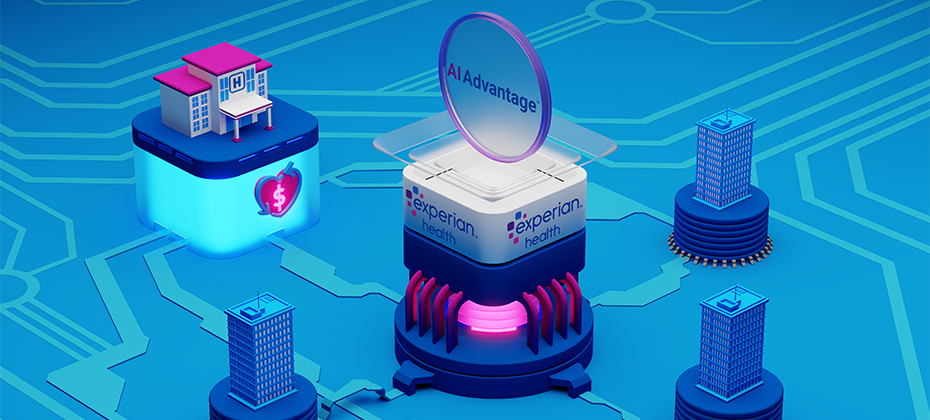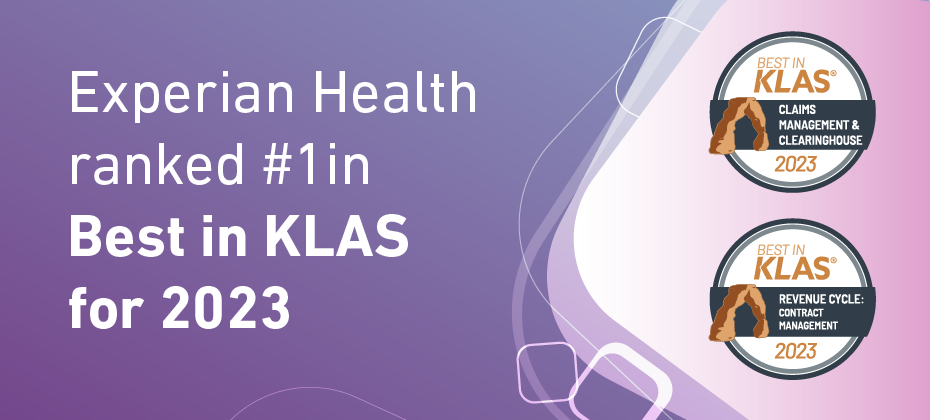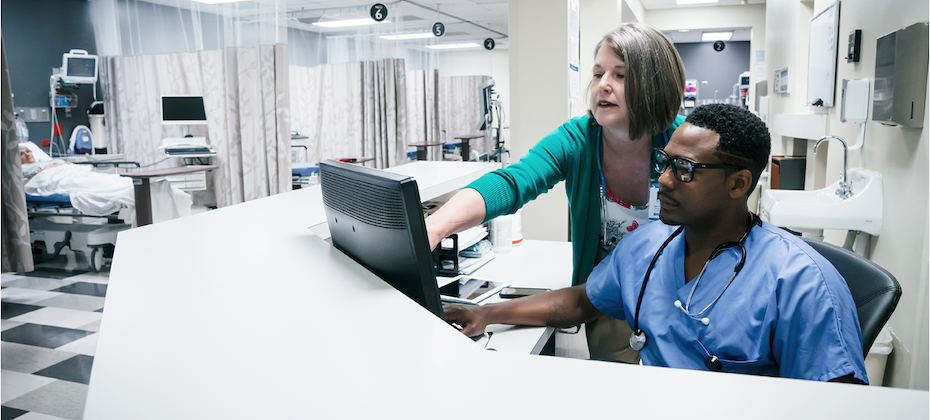Tag: claims management

“The challenge we sought to overcome by leveraging AI Advantage at our organization was just gaining more insight into how denials originate and what actions we can take to prevent those from happening.” — Skylar Earley, Director of Patient Financial Services, Schneck Medical Center Challenge Starting as a 17-bed hospital more than 100 years ago, Schneck Medical Center now serves four counties in Indiana, with a staff of more than 1,000 employees, 125 volunteers and nearly 200 physicians. The organization’s vision is to deliver excellence, lead transformation and advance health, underpinned by a patient-first philosophy. For the Patient Financial Services team at Schneck Medical Center, reworking denied healthcare claims was often time-consuming and inefficient. Billers tended to prioritize high-value claims, without knowing the probability of reimbursement. They sought a denial management solution that would reduce the risk of denied claims and minimize their impact on the revenue cycle. Solution Schneck worked with Experian Health to test two new denial management solutions that use artificial intelligence (AI) to reduce the likelihood of denials and prioritize rework to maximize reimbursement. The first, AI Advantage™ – Predictive Denials, uses AI to predict claims that have a high chance of being denied, so they can be corrected before the claim is sent to the payer. If a claim review exceeds the suggested threshold for denial probability, an alert is triggered, and the flagged claim is automatically routed to the appropriate biller. The biller investigates the alert to understand what changes are needed. This might include checking insurance eligibility, reviewing coding errors or reviewing authorization status. Once the alert is resolved, the claim can be automatically resubmitted. The second solution, AI Advantage™ – Denial Triage, prioritizes denials based on the potential for reimbursement so staff can focus recovery efforts on the right claims. The triage process starts with identifying between 2 and 10 denial segmentation categories based on likelihood of reimbursement. Schneck chose to identify 5 categories to start. Individual remits are evaluated and automatically assigned to the appropriate category, so they can be routed to the correct specialist. The tools use historical claims data and a continuously learning AI model to detect patterns in payer decisions. Staff can customize denial probability thresholds and segmentation criteria to ensure claims are routed to the correct specialist. The solutions integrate seamlessly with Schneck’s existing claims management system, ClaimSource®, and other health information workflows. Outcome After just six months, AI Advantage helped Schneck reduce denials by an average of 4.6% each month. Corrections that would previously have taken 12 to 15 minutes to rework can now be processed in under 5 minutes. Staff report that the thresholds determined by AI Advantage – Predictive Denials are highly accurate, leading to better decision-making when reworking claims prior to submission. And with AI Advantage – Denials Triage, staff feel confident that they’re focusing their attention on the right segments, rather than wasting time on high-value claims that are unlikely to be reimbursed. Skylar Earley says, “Before, we had no insight into whether we were performing value-added work when we followed up and worked denials. Now we see those percentages.” Learn more about how AI Advantage generates insights to help healthcare organizations reduce time spent working denials and maximize reimbursement.

Healthcare is undergoing a digital revolution driven by artificial intelligence (AI) and machine learning (ML) technology. While some organizations have been slow to adapt, others incorporated new solutions that have helped their organization identify patterns, reduce claim denials, and more. This infographic breaks down common phrases related to artificial intelligence and machine learning so that healthcare organizations can understand what they mean and how they're utilized. Introducing: AI Advantage™ Experian Health is the top-performing claims management vendor, according to the 2023 Best in KLAS: Software and Professional Services report. Experian Health’s ClaimSource® solution, an automated, scalable claims management system designed to prevent claim denials, ranked number one in the Claims Management and Clearinghouse category. With denials and staffing shortages on the rise, an efficient claims management strategy is essential. Experian Health is here to help with AI Advantage™ – a new solution that utilizes true artificial intelligence that proactively helps reduce denials and, when necessary, identifies the best denials to resubmit.

Experian Health is very pleased to announce that it ranked #1 in Best in KLAS, Software and Professional Services, for two segments: #1 in Claims Management and Clearinghouse, for our ClaimSource® claims management system #1 in Revenue Cycle, Contract Management, for our Contract Manager and Contract Analysis product. According to KLAS CEO Adam Gale, “The 2023 Best in KLAS report highlights the top-performing healthcare IT solutions as determined by extensive evaluations and conversations with thousands of healthcare providers. These distinguished winners have demonstrated exceptional dedication to improving and innovating the industry, and their efforts are recognized through their inclusion in this report. Congratulations to all the winning vendors for setting the bar for excellence in healthcare IT! KLAS continues to be committed to creating transparency and helping providers make informed decisions through our accurate, honest, and impartial reporting.” Experian Health’s 2022 State of Claims survey reveals that 47% of providers said that improving clean claims rates was one of their top pain points, with 42% reporting that denials have increased in the past year. Read how Hattiesburg Clinic in Mississippi, which uses both Contract Manager and Analysis and ClaimSource, leverages ClaimSource to automate claims management and reduce denials. Learn more about how ClaimSource and Contract Manager and Contract Analysis can help your healthcare organization.

Hattiesburg Clinic is Mississippi’s largest multispecialty clinic with over 450 physicians serving 19 counties. Claims management, patient collections and payer contract management are handled by the clinic’s Financial Services Department, which includes around 70 staff members. Challenge Hattiesburg Clinic in Mississippi sought to improve financial performance in the wake of the COVID-19 pandemic by focusing on reducing claim denials. The Financial Services Department had been hit by staffing shortages, which affected financial results. A more efficient digital claims management solution would attract and retain a high-performing virtual team, while supporting the shift away from existing paper-based systems. To submit more clean claims the first time, the Department set specific goals to: meet or exceed Epic benchmarks for primary denials maintain accounts receivable (AR) days at 42 or less process secondary and tertiary claims without waiting for the primary electronic remittance advice (ERA) to be posted. Solution Already impressed with Experian Health’s Contract Manager and Eligibility solutions, the Department chose another Experian product, ClaimSource®, to help reduce denials. Loretta McLaughlin, Assistant Director of Financial Services, said she was confident ClaimSource was a good candidate for the clinic’s claims platform: “ClaimSource seemed like the right fit for the department’s goals. The platform’s ability to customize edits, along with the level of customer support available, really set the solution apart from the alternatives.” ClaimSource uses scalable automation to prioritize claims, payments and denials. This allows staff to use their time as efficiently as possible, by working on the highest-impact accounts first. Using customizable edits and extensive national and local payer edits, it checks each claim for inconsistencies before the claim is submitted. ERA data is automatically integrated into Epic so that staff can check a claim’s status quickly and easily. With real-time reporting, staff gets insights from across the entire claim lifecycle to improve performance. Outcome The ability to integrate customizable edits was a big advantage for the clinic. They now have over 90 custom edits that help eliminate time-consuming errors, reduce denials, and allow staff to focus on the right accounts. As a result, Hattiesburg Clinic has achieved a 6.1% primary denial rate, which exceeds the Epic Financial Pulse benchmark. Despite staffing shortages, they’ve been able to accelerate receivables. They’re also seeing accelerated cash flow, now they can pursue claims from secondary and tertiary payers without awaiting the outcome of primary claims adjudication. ClaimSource is also creating a better staff experience: the tool eliminates the need for claims to be printed, so staff can work from any location. Now, over 50% of the team work from home. Thanks to automated workflows, output has been consistent despite a reduced workforce. Being able to submit clean claims the first time has a positive impact on AR days as well as staff workload. Loretta McLaughlin says: “Through ClaimSource’s automation and level of quality work, we have had to do less manual intervention.” To build on this success, the team intends to explore further opportunities to use automation to improve productivity. Options include automatically generating patient estimates, automating bad debt and refund workflows, and allowing patients to verify insurance eligibility through their patient portals. Find out more about how ClaimSource helps hospitals, health systems and physician groups reduce denials, protect profits and increase productivity through automated and scalable claims management.

With 2023 just around the corner, healthcare executives are teasing out their strategic priorities for the next 12 months. Where should they be focusing their attention? Here are the top 3 healthcare predictions to watch in 2023 and the actions needed to help providers prepare. Prediction 1: AI and automation will continue to gain traction “The time is now for providers to get ready, prepare and implement these technologies.” - Jason Considine, Chief Commercial Officer at Experian Health Automation came to the forefront during the pandemic, enabling essential access to care and filling in gaps created by staffing shortages. By now, the use of remote and digital tools is pretty well-established. Automation is the norm, but there’s room to leverage these solutions for an even greater ROI. As Jason Considine says, investing in technology that makes it easier for providers to get paid will be a particularly effective use of digital tools. One such example is in the digitalization of healthcare claims. Healthcare claims management processes have typically relied on manual systems. These can be slow and error-prone, creating avoidable extra work for staff and friction for patients. In the State of Claims 2022, 78% of executives said their organization would be likely to replace their existing claims management solution if convinced something else can deliver better ROI. Eliminating inefficiencies and optimizing reimbursement would certainly check that box. Tools like Denials Workflow Manager, Enhanced Claim Status and ClaimSource® use automation and detailed analytics to improve claims management performance. More claims can be processed more accurately, resulting in fewer denials and faster reimbursement. With denials increasing by 10–15%, claims automation is likely to be a top priority for many providers in 2023. Prediction 2: Patients will increasingly choose providers that offer a user-friendly financial experience “The immediate path to better billing and payment processes may escalate pressures on providers right now, but it will yield better financial outcomes in the future for patients.” - Victoria Dames, Vice President of Product Management at Experian Health The economic downturn has put pressure on providers and patients, which we can expect to last into 2023. Patients are concerned about healthcare costs, but they’ve also come to expect a more transparent and compassionate financial experience. Experian Health's top healthcare predictions finds that reliable pricing estimates, support to find the right payment plan, and convenient and flexible payment options will be table stakes in 2023. For providers, implementing digital payment options to meet these needs may be challenging, but it’s an investment that will yield positive long-term results. More than 6 in 10 patients who have received an unexpected bill or inaccurate estimate would switch healthcare providers for a better experience in future, placing transparent medical billing at the core of attraction and retention strategies. The medical billing software outsourcing market is already experiencing historic growth as providers respond to patient demand for a digital financial experience: the market’s value is expected to grow over the next decade, from $11.1 billion in 2021 to $55.6 billion in 2032. Experian Health leads the way when it comes to creating a patient-friendly billing and payment experience, with solutions such as Patient Financial Advisor and Patient Estimates. Giving patients greater control over their financial journey with upfront estimates and tailored payment plans makes it easier for them to prepare for payments. Prediction 3: Providers that fail to create a welcoming digital front door could be closing off revenue opportunities “Deliver convenience. People are consumers before they are patients.” - Tom Cox, President at Experian Health Automation offers opportunities for optimization throughout the revenue cycle, but one of the most crucial points is in patient access. Making patient access easier is on the list of top healthcare predictions, and for good reason - a frictionless first impression can have a powerful lasting effect. What should this look like? Cox advises that providers should “anticipate the needs of digital-first customers.” Patients expect the same personalized service they are accustomed to in other sectors, with convenience, choice and control at the center. Administrative “relics” such as the traditional waiting room clipboards and repetitive forms must be minimized where possible. A report from Experian Health and PYMNTS found that a third of patients chose to fill out registration forms for their most recent healthcare visit using digital methods. 61% of patients even said they’d consider changing healthcare providers to one that offers a patient portal. Online scheduling software and self-service registration makes it easy for patients to complete these tasks in advance. Providers can then round out a user-friendly patient experience with Patient Payment Solutions. This gives patients a choice of payment methods, leading to faster payments. Providers have realized that many patient access functions can be achieved more efficiently and cost-effectively using self-service and remote digital tools. By streamlining intake operations, organizations can make better use of staff time, reduce errors and increase productivity, while improving the patient experience simultaneously. As revenue cycle technology continues to develop in 2023 and beyond, providers need to ensure they are capitalizing on the latest software to improve their bottom line, deliver on patients’ service expectations, and keep pace with healthcare predictions. Learn more about Experian Health's revenue cycle management solutions and contact us to find out how these solutions can help healthcare organizations open their digital front door and prepare for 2023.

The medical billing software outsourcing market is experiencing historic growth as providers respond to patient demand for digital payment options. The market’s value is expected to grow by five times over the next decade, from $11.1 billion in 2021 to $55.6 billion in 2032, according to a recent Future Market Insights report. The pandemic has been the main driver of digital transformation in healthcare billing, embedding patient expectations for the same friction-free experience that has become the norm in other retail environments. By implementing medical billing software and digital collections solutions, providers can offer patients the flexibility and choice they desire. They can also capitalize on operational efficiencies – but only if they choose the right tools. Without the time or resources to undertake these activities in-house, many revenue cycle management teams are starting to outsource, in order to optimize medical billing processes, reduce costs and improve the patient payment experience. Choosing the right medical billing software Digital solutions can support every step of the patient’s financial journey, from receiving initial pricing estimates to paying at the click of a button. What criteria should providers consider when evaluating solutions that cater to patient demands for a better payment experience? Here are a few to look out for: Automation - Digital solutions do more than simply remove the need for paper-based billing. Software and machine learning can complete tasks to reduce the burden on staff and patients. Patient payment reminders, auto-filled claims forms and coverage checks are just a few examples of how automation can deliver speed and simplicity to patients, while saving staff time. User-friendly interfaces - A digital tool that’s difficult to use is never going to gain traction. Whether patient-facing or for use by front or back-office staff, user interfaces should be clean, simple and intuitive. Tracking and reporting - Digital billing solutions should offer the ability to monitor progress and generate instant status updates on payments and claims. With real-time insights, staff can further optimize collections and reimbursements. Reliable and secure data - Software and digital solutions are only as good as the data on which they’re built. Fresh, accurate patient data is essential. Data should be held in standardized and interoperable formats to streamline data exchange between different electronic records management systems. This will help to avoid errors, keep data secure and ensure compliance with HIPAA. A single vendor - A piecemeal approach can result in tools that don’t speak to each other. Instead, it makes sense to select a vendor that offers integrated systems for greater reliability and ease of use. Information from multiple billing and claims tools can be pulled into a single dashboard, so staff can capture the details they need at a glance. Setting up and optimizing digital solutions can be easier with a single vendor too. That’s why Experian Health offers consultancy and technical support to help users get started quickly. Here are 4 medical billing solutions that check these boxes: 1. Generate accurate estimates during patient registration with Patient Payment Estimates Providers can set the tone for a positive financial experience by deploying digital billing solutions from the start of the patient journey. One example is to offer patients accurate estimates of the cost of care before or at the point of service, so they can concentrate on treatment without worrying about unexpected bills. Patient Payment Estimates give patients a breakdown of their financial responsibility along with information about relevant payment plans and links to convenient payment methods. These can be accessed via a web-based tool or sent straight to their mobile device. Given that 6 out of 10 patients who received inaccurate cost estimates would switch providers for a better payment experience, tools like these could deliver a strong ROI. 2. Verify coverage as early as possible with Insurance Eligibility Verification and Coverage Discovery Verifying a patient’s active insurance coverage is a painstaking task when undertaken by hand. Staff must pore over payer websites and call insurance agents to check what the patient’s plan will cover. Automated tools like Insurance Eligibility Verification and Coverage Discovery can identify coverage quickly and accurately. Not only does this reduce the patient’s financial responsibility, but it also lowers the risk of uncompensated care and saves valuable time for staff. 3. Submit clean claims the first time with Claims Management Software Automating claims management takes a huge amount of pressure off staff teams. It also guarantees a higher level of accuracy than if claims were managed manually. Claims management software can automatically add patient information to claims, incorporate customized edits and review coding to ensure claims are correct before they are submitted electronically. Claims adjudication can be monitored in real-time to reduce the risk of denials. 4. Provide personalized payment plans and point-of-service payment options with PatientSimple Ideally, bills will be settled as early as possible. Neither providers nor patients want a protracted process of overdue statements and repeated phone calls from collections agencies. If patients are offered a choice of convenient payment methods at each touchpoint, they’re more likely to pay before or at the point of service. PatientSimple leverages Experian Health’s unrivaled data to identify the most suitable payment pathway for each patient and helps them manage it through a user-friendly, self-service portal. Patients can view statements online and pay balances immediately with cards kept on file. With the right medical billing solutions, providers can alleviate pressures on staff, reduce the risk of errors and support compliance with new regulatory requirements. But more importantly, it creates a healthcare experience that’s efficient, flexible and simple for patients, resulting in higher consumer satisfaction and faster patient collections. Find out more about how Experian Health’s medical billing solutions help providers maintain a healthy revenue cycle and meet patient expectations for a 21st-century consumer experience.

In 2009, processing claims was listed as the second greatest contributor to “wasted” healthcare dollars in the US, at an estimated $210 billion. A decade later, that amount was estimated at $265 billion. Today, healthcare providers are still grappling with denied healthcare claims, with both challenges and solutions accelerated by the pandemic. To put the scale of operational and delivery changes into perspective, Experian Health recorded well over 100,000 payer policy changes for coding and reimbursement between March 2020 and March 2022. The implications for claims processing are immense, which is why healthcare providers need to reevaluate their denial management strategies and invest in new technology that can help increase reimbursements. In June 2022, Experian Health surveyed 200 revenue cycle decision-makers to understand how they feel about the current situation. What are the priorities of those on the front line of denials management? And how can technology contribute to improvements? This article breaks down the key findings. Takeaway 1: Denials are increasing and reducing them is priority #1 30% of respondents say denials are increasing by 10-15% Nearly 3 out of 4 respondents say that reducing denials is their top priority For most respondents, claims management is more important now than it was before the pandemic, because of payer policy changes, reimbursement delays and increasing denials. Respondents attribute this to insufficient data analytics, lack of automation in the claims/denials process and lack of thorough staff training. When it comes to improving denial rates, staffing seems to be the greatest challenge. More than half of respondents say staff shortages are slowing down claims submissions and hampering efficiency. Shrinking offices mean there is less staff to handle the growing volume and complexity of claims. It’s no surprise, then, that around 4 in 10 respondents are also concerned about keeping up with rapidly changing payer policies and keeping track of pre-authorization requirements. Providers recognize that technology can help reduce denials while easing the burden on staff. A tool like ClaimSource manages the entire claims cycle using customizable work queues that make it easy to prioritize accounts, saving staff time and avoiding the errors that lead to denials. This also incorporates payer edits to ensure that claims are clean before being submitted to the payer. And if claims do end up needing further attention, Denials Workflow Manager eliminates time-consuming manual processes and allows providers to attend to high-risk claims quickly, so there’s less chance of delayed reimbursement. Takeaway 2: Automating denials management in healthcare is critical 52% of respondents upgraded or replaced previous claims process technology in the last 12 months 51% are using robotic processes, including automation, but only 11% are using artificial intelligence Prior to the pandemic, automation was sometimes perceived as a threat to jobs. But with changing employment patterns and evidence of the broader benefits of automation, attitudes are shifting. Automation can make life easier for staff by removing manual tasks to allow them to focus on other priorities. It speeds up the healthcare claims processing workflow, reduces the risk of errors, and enables better communication between providers, patients and payers. Providers recognize that automation drives more efficient claims management. The survey revealed that 45% of respondents turned to automation to keep track of payer policy changes, 44% had automated patient portal claims reviews, and 39% had digitized patient registration in the last year. Automation supports all stages of the claims management process, from auto-filling patient data during registration, to generating real-time claim status reports for back-office staff. Payer authorizations were a common challenge for providers, and a perfect fit for automation. Experian Health’s Prior Authorizations solution eliminates the need for staff to visit multiple payer websites, automates inquiries, and offers real-time updates on pending and denied submissions so staff knows when to intervene. Takeaway 3: Providers are searching for denial management solutions that will achieve the greatest ROI 91% of those likely to invest in claims technology say they will replace existing solutions if presented with a compelling ROI The majority of providers may be on the lookout for better claims management solutions, but they vary in how they measure ROI. Predictably, one of the most common metrics is how much staff time can be saved, with 61% concerned with hours spent appealing or resubmitting claims, and 52% looking at time spent reworking claims versus reimbursement totals. Rates of clean claims and denials were also popular metrics, at 47% and 41%, respectively. Using Denials Workflow Manager and ClaimSource alongside additional claims management solutions like Claim Scrubber and Enhanced Claim Status can deliver an even stronger performance against the above metrics. Each solves a specific challenge within the claims management workflow, but when used together, the ROI is multiplied. Overall, there’s optimism that digital technology and automation can help healthcare providers improve claims and denial management and reduce the amount of “wasted” dollars. This survey shows that providers are keen to grasp the opportunities offered by automation to optimize the reimbursement process and get paid sooner. Download the report to get the full results on the State of Claims 2022, and discover how Experian Health can help organizations with their denial management strategies.

When it comes to medical coding and billing, accuracy is everything. Even the smallest error can result in a claim being bounced back by the payer, causing delays and missed revenue opportunities. Coding requirements change frequently, and with denials totaling billions of dollars per year, providers can’t afford to risk under- or over-coding or relying on outdated codes. Automation and software-driven solutions can uncomplicate the complex world of medical coding. Getting claims right the first time accelerates the adjudication process, leading to faster and higher reimbursements. Providers can make more reliable financial forecasts, avoid losing time reworking rejected claims, and give patients greater clarity about what they’ll owe. For this reason, providers should brush up on medical coding and billing best practices to improve claims management and maximize reimbursements. Here are 7 areas to focus on: 1. Stay up-to-date with coding changes Medical codes convert information about the patient’s healthcare encounter into an electronic format that payers use to adjudicate claims for reimbursement. If a claim includes outdated, incorrect or missing codes, then it will be denied. The most common medical coding systems include: International Classification of Disease 10th edition (ICD-10) codes: these codes denote the patient’s diagnosis or condition. The 11th version was published in January 2022, and while the implementation timeline in the US remains unclear, providers will need to be ready to adapt. Current Procedural Terminology (CPT) codes: Where ICD codes describe the patient’s symptoms, CPT codes record their treatment. If there’s a discrepancy between diagnosis and treatment, the claim is likely to be denied. Healthcare Common Procedure Coding System (HCPCS) codes: the Centers for Medicare and Medicaid Services (CMS) use these to apply CPT codes to procedures, services, products and equipment offered to Medicaid and Medicare patients and those covered by private insurance. These codes are constantly being revised and are often recycled, so coders must pay close attention to avoid errors. National Drug Code (NDC): claims need to include NDC codes when the patient is taking prescribed or over-the-counter medications. The NDC directory is updated daily. Diagnosis-Related Group (DRG) codes: these combine ICD and CPT codes to determine the final amount that a hospital can be reimbursed. CMS assigns annually calculated weightings to DRGs based on severity and length of illness, treatment trends and other factors. There are also multiple coding directories for different specialties, such as dental care, mental health and patients with disabilities. With hundreds of thousands of constantly-changing codable terms to consider, medical coders face a daunting task. In the past, coders would rely on manual coding directories to find the right codes, but today, most use digital encoders and digital coding libraries to generate electronic codes. For example, Experian Health’s claims management software integrates government and payer edits so that no changes to coding requirements are missed. Each patient encounter can be processed in real time and incorrect codes can be flagged before the claim is submitted. 2. Automate the claims management process to increase medical billing and coding accuracy Manually matching each patient encounter to a specific set of codes is time-consuming and vulnerable to errors. Software programs improve the process by analyzing unstructured clin constantly-changing codable terms ical charts and notes to draw out information relevant to the claim. They can cross-reference multiple coding directories in an instant to identify the correct code. They also compile data in standardized, interoperable formats so information can be exchanged between coding and billing teams, clearinghouse staff and payer systems with ease. While some of the output generated by machine learning systems still needs to be checked by human eyes, automated solutions drastically reduce the burden on staff and ensure greater accuracy. With automated claims management, medical coding and billing teams can optimize their workflows, submit cleaner claims, and get insights into the root causes of denials. Case study: see how Summit Medical Group Oregon – Bend Memorial Clinic used automated claims management technology to achieve a primary clean claims rate of 92%. 3. Eliminate workflow inefficiencies to save time According to the Council for Affordable Quality Healthcare (CAQH), automation could save more than an hour of staff time for every three claim status checks. Automation frees up staff to focus on the highest priority tasks that require a human touch. Fewer errors mean less time spent on reworking denied claims. And if claims are processed more quickly, this means that they reach the payer adjudication stage sooner which ultimately will result in faster payments. The medical coding and billing process takes anywhere from a week to a few months, so every hour saved makes a difference. To this end, Enhanced Claim Status monitors how claims are progressing through the claims adjudication process, reducing the amount of time staff need to spend interacting with payers. It eliminates manual follow-up and allows teams to address pending, returned, denied and zero-pay transactions before the Electronic Remittance Advice and Explanation of Benefits are processed. Worklists are generated based on actionable data so staff can work more productively, and claims get settled sooner. 4. Customize claims edits to your specifications One way to drive up medical coding accuracy is to use customized claims edits. Some claims management software solutions only apply updates using universal claim edits or using groups of edits. This doesn’t work for large medical groups that need to cover multiple combinations of payer, specialty and geographical edits. Since no two payer policies are the same, claims edits would need to be checked manually to make sure nothing has been missed. Experian Health’s claims management software solves this by incorporating government and commercial edits alongside client-specific customized edits. Providers can keep pace with changes and capture the requirements of all reimbursement policies that are relevant to a particular claim. For example, ClaimSource runs front-end claims editing to coordinate federal, state and commercial payer edits together with customized provider edits to avoid coding errors. Similarly, ClaimScrubber automatically reviews and adjusts claims, helping medical groups streamline claims submissions. 5. Upgrade record-keeping technology to maintain medical billing and coding accuracy If patient records are peppered with typos and outdated contact information, then it’s highly likely that errors will be inherited on claims forms. A fifth of patients have spotted errors in their health records, including incorrect details about diagnoses, medications and test results. Preventing these errors is key to maintaining medical billing and coding accuracy. Interoperable electronic patient records protect against inaccuracies by creating a single, complete record for each patient. With a tool such as Universal Identity Manager, patient data is matched against multiple data sources to verify that the record is complete and accurate. Staff can have confidence that all information held on a patient will be taken into account when their medical encounters are coded, and avoid coding discrepancies that can occur when a patient’s treatment doesn’t seem to match their diagnosis. 6. Double-check claims before submitting Running a line-by-line review of each claim before it’s submitted means errors can be found and fixed before they result in financial losses. This would be a painstaking task to do by hand, but with tools such as ClaimSource and ClaimScrubber, hospitals and medical groups can audit claims automatically to check for coding discrepancies or missing patient information. A streamlined claims cycle benefits payers and patients too. Payers can adjudicate accurately coded claims more quickly without pushing them into a queue for manual review, and patients get earlier clarity about how much they’ll owe. 7. Audit the claims management process to spot medical coding inaccuracies Finally, it makes sense to undertake regular audits of the medical coding and billing procedures to weed out any recurring issues. While a coding audit will focus on coding accuracy and compliance, a billing audit can investigate the systems and processes involved in everything from patient eligibility verification to patient collections. This helps uncover recurring issues with under- and over-coding, use of redundant and retired codes, non-compliance and poor documentation. Again, maintaining robust, quality data and records will make this process easier. Partnering with a single, trusted vendor to deliver an end-to-end claims management solution can help achieve this. Find out more about how Experian Health’s automated claims management solutions can help healthcare organizations maintain medical billing and coding accuracy, drive down denials and create a more predictable revenue cycle.

Automated claims processing could solve one of the biggest challenges currently facing healthcare providers: maximizing reimbursements by minimizing denied claims. Denials have been steadily increasing over the last few years. An MGMA Stat survey found that nearly seven in ten providers witnessed a jump in denials during 2021, although the trend took hold even before COVID-19 hit. If providers rely on outdated systems and tools to process the growing volume of claims, it's inevitable that denial rates will continue to climb. It's not surprising then that a new Experian Health survey revealed almost 3 in 4 providers stated that reducing claim denials takes precedence over other priorities. Getting claims right the first time is no easy task. Traditionally, the claims management process has been labor and time intensive. Claims teams spend hundreds of hours gathering documentation, preparing claims for submission, engaging with medical clearinghouses, and then monitoring claims adjudication while they await the payer's verdict. Should a claim be denied, more staff hours may be required to rework it for a second attempt at reimbursement. Even if administrative budgets and staffing numbers increased in line with demand, inefficient manual systems can no longer bear the burden of data to be managed. With more providers heading into the danger zone of claim denials, automated claims processing tools are growing in popularity. These enable more efficient claims management, boosting productivity, easing pressure on staff, and above all, minimizing denials. Experian Health's survey found that 78% of providers are open to replacing current technologies if they are presented with compelling ROI projections, reflecting the urgency of the situation. What is automated claims processing? Automating claims involves the use of digital technology, software, machine learning and advanced analytics to optimize healthcare claims management. This can include: pre-filling data into digital forms to avoid data input errors using intelligent document processing to pull unstructured information into a single, usable format comparing data from multiple sources and flagging inconsistencies providing real-time insights and status updates allowing multiple parties to work from interoperable data Tools such as robotic process automation (RPA) can be used to replace manual activities, using data, logic and business rules to make decisions within certain parameters. This eases pressure on busy staff and improves efficiency, for example, when prioritizing claims to be reworked. Imagine how much faster a software program can synthesize hundreds of current and historical data points, compared to a human trying to do the same job. There are opportunities to automate just about every stage of the claim lifecycle, from the patient's first interaction with their provider to reimbursement. For example, automation can be used to: Streamline patient onboarding and automate identity checks to avoid errors in patient information Verify insurance eligibility and run continuous coverage checks to see if the patient's status has changed Maintain a complete electronic health record that follows the patient throughout their healthcare journey, so claims contain correct information Track payer policy changes and apply custom edits so that coding information is correct Scrub claims to find and fix any errors before they are submitted Submit claims to payers and monitor the claims adjudication process Optimize the denials management workflow and prioritize denied claims for resubmission Verify reimbursements and initiate patient billing processes. Virtually any repetitive, process-driven, or paper-based task from claim creation to claim reimbursement is an opportunity for automation. As technology advances, so do the opportunities to streamline operations, reduce time to reimbursement, optimize decision-making, reduce costs and improve the patient experience. Here are the 5 benefits of automated claims processing: 1. Automated claims processing streamlines operations Automation's number one benefit is allowing providers to move away from inefficient and error-prone manual processes. Staff no longer need to sift through disparate and complex coding lists, medical records and payer edits looking for the correct information to attach to a claim. Together with electronic records management, automation allows for standardized workflows, so the entire claims cycle is more consistent, and decisions are based on real-time accurate data. It helps to eliminate time spent searching for missing information, reformatting data to meet payer requirements, and trying to figure out which claims are worth reworking. Multiple digital tools are available to optimize different tasks within the claims processing workflow. But for maximum efficiency, providers should look for solutions that work together within an integrated system. Using a single vendor makes it easier to manage data consistently and simplifies system-to-system interactions. A comprehensive claims management solution also creates a smoother user experience, for example, by allowing staff to check real-time insights within one dashboard, using one log-in. Experian Health's suite of healthcare claims management solutions connects each step in the claims workflow to speed up claims processing. For example, ClaimSource manages the entire claim cycle in a single, scalable online application that serves individual hospitals and physician practices through to large multi-facility health systems. It creates custom work queues and integrates electronic remittance data directly, to allow staff to prioritize high-impact claims and speed up reimbursement. 2. It saves staff time and resources Outdated and clumsy processes can contribute to staff burnout, poor performance and difficulties attracting and retaining top talent, even more so as patient volumes return to pre-pandemic levels. By removing many time-wasting manual tasks, automated claims processing allows staff to use their time more productively. It's particularly important amidst ongoing staffing shortages, which put additional strain on existing staff. Some of the most time-consuming manual activities occur in the prior authorization workflow. Prior authorizations are also a common cause of claim denials. Because payer requirements around prior authorizations change frequently, staff must painstakingly check each payer's website before submitting authorization requests to ensure that the necessary documentation is in place. Once submitted, they must log in to different payer portals to track progress. According to the American Medical Association, some physician practices spend more than two full days processing prior authorizations each week. But with automated prior authorizations, staff can prevent delays and denials. Online prior authorizations automate inquiries and submissions without the need for user intervention, instead drawing on payer data that are already updated and stored in the system. It auto-fills the necessary information and flags where manual intervention is required. It can initiate more authorizations in less time, and guide staff to the highest-priority tasks using dynamic, exception-based work queues. By reducing the error rate, automation also facilitates faster claims processing, which means payments can be processed and issued more quickly. 3. Automation generates more accurate and actionable insights Automation doesn't just save time; it also gives staff greater clarity and control over the claims process. Automated digital solutions facilitate more reliable data management to reduce errors, and generate real-time insights based on accurate information. A large proportion of claims are denied because patient information doesn't match the payer's records. This can be easily avoided using robust electronic medical records that hold data in standardized formats and automatically populate forms with the correct information. Electronic data management also gives staff richer and more reliable insights, by pulling together all the information they need into a single, accessible interface. Using an automated tracker such as Denial Workflow Manager makes it easy for staff to monitor claims, denials and remittances in one place. Not only does it track denials, holds, suspends, zero pays and appeals, but it also provides detailed analysis to help root out the causes of denials, so they can be avoided in the future. Staff can immediately see which claims need attention and resolve them much more quickly, as opposed to using manual processes. Enhanced Claim Status complements Denial Workflow Manager by automatically generating work lists for staff, complete with actionable data to help them check off the tasks quickly and accurately. The software sends automated status requests based on each payer's claims adjudication timeline, to see if claims are pending, denied, returned-to-provider or zero-pay transactions. This takes place before the Electronic Remittance Advice and Explanation of Benefits are processed, so staff can respond quickly and avoid unnecessary denials or delays. 4. Faster claims processing equals faster payment According to the Council for Affordable Quality Healthcare (CAQH), the time saved by switching from manual to electronic claims processing could save the medical industry up to $1.7 billion each year. The increase in accuracy leads to more first-time pass-through rates and optimized decision-making around which claims to rework. While automation requires some upfront investment, the output tips the balance in favor of faster, higher reimbursements. Experian Health's Claim Scrubber solution is one example of how automated claims processing can reduce undercharges and denials, optimize staff time and improve cash flow. This program reviews each pre-billed claim, line-by-line, to check that coding details are accurate. It then applies general and payer-specific edits and verifies that the claim is free of errors before it's submitted to the payer or clearinghouse. As a result, more claims are correct – and therefore paid – the first time, and staff can spend less time chasing old accounts receivable. Case study: Read how Summit Medical Group Oregon – Bend Memorial Clinic reduced A/R days and volume by 15%, and achieved a 92% clean claims rate with Claim Scrubber and Enhanced Claim Status. 5. Automation can transform the patient experience Getting claims right the first time starts at the beginning of the patient journey. A digital patient access experience is more convenient and satisfying for patients and helps prevent errors that can lead to denied claims later. Patient contact information can be automatically pre-filled so the patient can check for errors. If a patient adds new data when they're scheduling or registering for care, that information can be automatically checked against the data already on file, and flagged if there are inconsistencies. Further along, the efficiencies afforded by claim process automation mean patients don't have to wait so long for confirmation that their medical expenses have been handled. Or, if they have an out-of-pocket amount to pay, they'll get clarity about their financial responsibility much sooner. Patient portals are a great tool for helping patients track claims when and where it suits them, rather than having to wait to speak to a call center agent. And by making the claims process more efficient, automation also releases staff from time-consuming repetitive administrative tasks so they're free to support patients with more complex queries. Automation can elevate the customer experience with personalized communications and simplified transactions, from patient access to patient payments. Transitioning to automated claims management As the volume and complexity of claims to be processed increases, providers need to find ways to manage the workload, alleviate pressure on staff and prevent unnecessary revenue leakage. Working with a trusted vendor can ease the transition to automation and maximize potential cost savings. Experian Health provides industry-leading software solutions to improve healthcare claims and denials management so that more claims are clean the first time. In fact, Experian Health was voted as the top claims vendor for hospitals in the 2022 Black Book vendor survey, for the second year in a row. Find out more about how Experian Health's suite of healthcare claims management products can help providers reduce denials, rebilling and drive up reimbursements with automated, clean and data-driven claims processing.